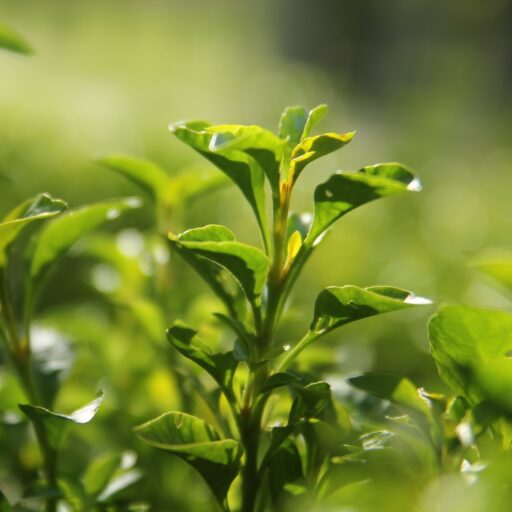Support our educational content for free when you purchase through links on our site. Learn more
[2023] Grow Your Own Black Tea: The Ultimate Guide
Quick Answer: Growing your own black tea is a rewarding and sustainable way to enjoy your favorite beverage. With the right conditions and care, you can cultivate tea plants in your garden and harvest fresh leaves for brewing. In this comprehensive guide, we’ll walk you through the process of growing black tea, from selecting the right tea plant variety to harvesting and processing the leaves. Let’s get started!
Table of Contents
- Quick Answer
- Quick Tips and Facts
- Background and History
- Selecting the Right Tea Plant Variety
- Preparing the Soil and Climate
- Planting and Caring for Tea Plants
- Harvesting and Processing Tea Leaves
- FAQ
- Conclusion
- Recommended Links
- Reference Links
Quick Answer
Growing your own black tea is a rewarding and sustainable way to enjoy your favorite beverage. By cultivating tea plants in your garden, you can have a constant supply of fresh leaves for brewing. Here are the key steps to grow black tea:
- Select the right tea plant variety: Choose a variety of Camellia sinensis that is suitable for your climate and preferences.
- Prepare the soil and climate: Ensure your soil is well-draining and slightly acidic. Provide the right amount of sunlight and temperature for optimal growth.
- Plant and care for tea plants: Plant your tea plants in a suitable location and provide regular watering and fertilization.
- Harvest and process tea leaves: Harvest the leaves at the right time and process them to make black tea.
Recommended Products:
Quick Tips and Facts
- Black tea comes from the same plant as green and oolong tea, Camellia sinensis.
- Tea plants prefer full sun or partial shade and well-draining soil.
- Regular watering and fertilization are essential for healthy tea plant growth.
- The best time to harvest tea leaves is during the first flush when the leaves are young and tender.
- Processing tea leaves involves withering, rolling, oxidizing, and drying.
Background and History
Tea has a rich history that dates back thousands of years. It originated in China and spread to other parts of the world, becoming one of the most popular beverages globally. The cultivation of tea plants, specifically Camellia sinensis, has been practiced for centuries.
Tea plants are evergreen shrubs that can be grown as ornamental plants in addition to their tea production. They have attractive white flowers that bloom in the fall, adding beauty to your garden. Tea plants are suitable for outdoor cultivation in zones 7-9, but they may require shelter or a greenhouse in slightly colder or warmer zones.
Selecting the Right Tea Plant Variety
When growing black tea, it’s important to select the right tea plant variety that suits your climate and preferences. Here are some popular tea plant varieties:
| Variety | Description |
|---|---|
| Assam | Known for its strong and malty flavor, Assam tea plants thrive in warm and humid climates. They are ideal for regions with hot summers. |
| Darjeeling | Darjeeling tea plants produce a delicate and aromatic tea. They prefer cooler temperatures and higher altitudes. |
| Keemun | Keemun tea plants are known for their rich and smoky flavor. They grow well in moderate climates with distinct seasons. |
| Ceylon | Ceylon tea plants are cultivated in Sri Lanka and produce a bright and citrusy tea. They prefer warm and tropical climates. |
Recommended Products:
- Assam tea plants | Walmart | Etsy
- Darjeeling tea plants | Walmart | Etsy
- Keemun tea plants | Walmart | Etsy
- Ceylon tea plants | Walmart | Etsy
Preparing the Soil and Climate
Tea plants thrive in well-draining soil that is slightly acidic. Here are some tips for preparing the soil and creating the right climate for tea plants:
-
Soil preparation: Ensure your soil is loose, fertile, and well-draining. Add organic matter such as compost or well-rotted manure to improve soil fertility and drainage.
-
Acidity: Tea plants prefer slightly acidic soil with a pH range of 6 to 6.5. Test your soil’s pH and adjust it if necessary by adding amendments like sulfur or lime.
-
Sunlight: Tea plants require at least 4-6 hours of direct sunlight per day. Choose a location in your garden that receives adequate sunlight.
-
Temperature: Tea plants thrive in moderate temperatures between 65°F and 85°F (18°C to 29°C). Protect them from extreme heat or cold by providing shade or shelter when needed.
Planting and Caring for Tea Plants
Once you have prepared the soil and created the right climate, it’s time to plant your tea plants. Follow these steps for successful planting and care:
-
Planting: Dig a hole that is slightly larger than the root ball of your tea plant. Place the plant in the hole, ensuring that the top of the root ball is level with the soil surface. Backfill the hole and gently firm the soil around the plant.
-
Watering: Tea plants require regular watering, especially during dry periods. Keep the soil consistently moist but not waterlogged. Mulching around the plants can help retain moisture.
-
Fertilization: Apply a balanced fertilizer formulated for acid-loving plants, such as one with a ratio of 10-10-10 or 12-6-6. Follow the manufacturer’s instructions for application rates and timing.
-
Pruning: Prune your tea plants regularly to maintain their shape and size. This also encourages new growth and improves air circulation. Prune in early spring before new growth begins.
Recommended Products:
Harvesting and Processing Tea Leaves
The ultimate reward of growing black tea is harvesting and processing your own tea leaves. Here’s how to do it:
-
Harvesting: Harvest the tea leaves when they are young and tender, usually during the first flush. This is when the leaves have the best flavor and aroma. Use sharp scissors or pruning shears to carefully cut the leaves.
-
Withering: Spread the harvested leaves in a single layer on a tray or mesh screen. Allow them to wither for several hours, which reduces moisture content and prepares them for rolling.
-
Rolling: Gently roll the withered leaves between your hands or use a rolling pin to break the cell walls and release the tea’s natural juices. This step initiates the oxidation process.
-
Oxidizing: Leave the rolled leaves in a cool, well-ventilated area to oxidize. The duration of oxidation depends on the desired type of black tea. Monitor the leaves and check for the desired level of oxidation.
-
Drying: Once the leaves have reached the desired level of oxidation, dry them to stop the oxidation process. You can air-dry the leaves or use a dehydrator or oven set to a low temperature.
-
Storing: Store the dried tea leaves in airtight containers away from light, heat, and moisture. Enjoy your homemade black tea by brewing it in hot water.
FAQ
Can you grow your own black tea?
Yes, you can grow your own black tea by cultivating tea plants in your garden. With the right conditions and care, you can harvest fresh tea leaves and process them to make black tea.
Read more about “… What Environment Does Tea Need to Grow? The Ultimate Guide”
Is black tea hard to grow?
Black tea is not particularly difficult to grow, but it requires specific conditions for optimal growth. Tea plants prefer well-draining soil, regular watering, and moderate temperatures. With proper care, you can successfully grow black tea in your garden.
Read more about “… How Much Tea Can You Get From One Tea Plant?”
How long does it take to grow black tea?
The time it takes to grow black tea depends on various factors, including the tea plant variety and growing conditions. Generally, tea plants take around 3 to 5 years to reach maturity and produce a significant harvest of leaves.
Read more about “… Herbal Tea Plants: A Comprehensive Guide to Growing Your Own Tea Garden”
What kind of plant grows black tea?
Black tea comes from the tea plant, scientifically known as Camellia sinensis. This evergreen shrub is native to East Asia and is cultivated for its leaves, which are used to make various types of tea, including black tea.
Recommended Products:
Conclusion
Growing your own black tea is a rewarding and sustainable endeavor. By following the steps outlined in this guide, you can cultivate tea plants in your garden and enjoy the satisfaction of harvesting and processing your own tea leaves. Remember to select the right tea plant variety, prepare the soil and climate, and provide proper care for your tea plants. With patience and dedication, you’ll be brewing your own homemade black tea in no time!





